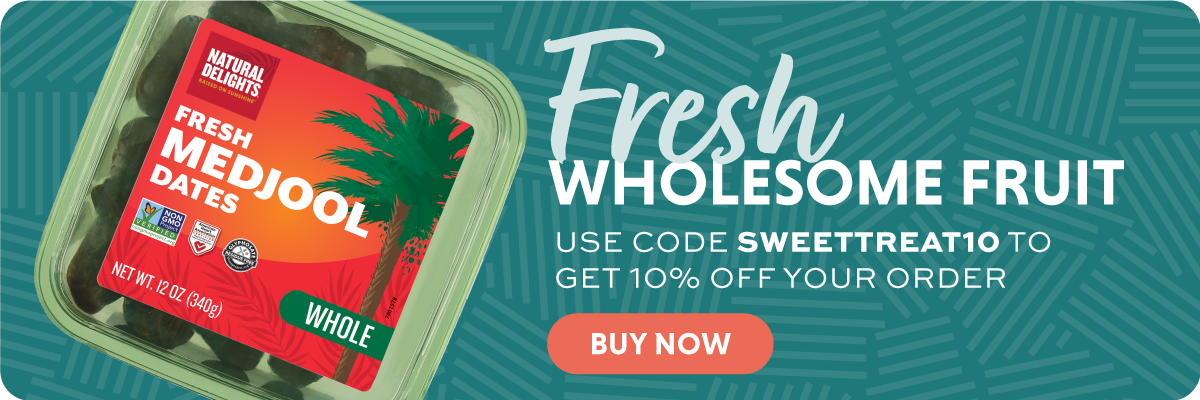
I have been on a lot of farm tours, but nothing like the farm tour I went on with Natural Delights! They gave us the opportunity to harvest our very own dates during peak season in Bard Valley, which is at the intersection of California and Arizona, just outside of Yuma. Then they let us try to sort them based on how ripe each one was, which ended up being an I Love Lucy moment for me. There is a lot that goes into growing dates and I learned so much from this once in a lifetime experience! Medjool dates are harvested from August-September and are a storage crop that requires a lot of manual labor and planning. Here are all the different steps involved in harvesting Medjool dates.
It all started in 1944 when Morocco asked the United States for help to preserve date palms from extinction. They sent six Medjool palms to Bard Valley in hopes that they would take root. And surely enough, these palms have contributed to the largest Medjool date growing region in the U.S.
Planting
Bard Valley used to be under water from the Colorado River which makes the soil perfect to grow date palm trees. If you dig anywhere, you will find water six feet deep. It takes six years for a “shoot” to produce fruit, and the trees will grow about one foot per year and will get as tall as you let them continue to grow!
Growing
Date palms require a lot of care throughout the year. At the beginning of the year, the farmers start off by removing thorns and thinning out and reducing bunches. The thorns are sharp enough to go through your shoes and through gloves, which is why it’s so important to trim them before the fruit grows. When the flower on the palm tree blooms, the crew goes through and hand-pollinates them from the male trees. Then the team will eventually thin out the fruit to allow the remaining fruit to grow larger. If they do not thin out the fruit, then each date size will be very small, and we love a big juicy date! After the weight of the fruit grows, they have to tie the branches together so the branches don’t break off. While they are doing that, they insert a metal ring inside the bag and it spaces the dates out. Then 2-3 weeks before harvest they tie the ends of the bags so that the birds do not eat the fruit.
 Harvest
Harvest
The Medjool dates start to ripen in late July and will continue to ripen through late September. Once they are ripe, the fruit needs to be harvested within 2-3 weeks. Sunny days make for the best harvest conditions since dates grow to be juicy and plump when they have 100 days over 100 degrees. The team at Natural Delights gave me the opportunity to harvest their dates myself last year, and it was fascinating! First they put a harness on me and then clipped us in as a lift raised us into the trees. Once we got to the top of the tree, I watched and the palmeros (date harvesters) showed me how to shake the fruit off the tree. I grabbed a mesh bag full of dates and shook it until all of the loose and ripe fruit fell into the bottom of the bag. Then I untied the bag and let it fall into the baskets. Once the basket was full, we lowered them down with a rope to sort into trays!
Here’s a great visualization of the harvest process from start to finish from the Natural Delights YouTube page:
Get ready for the store
When the trays of dates are full, Natural Delights uses a forklift to take the trays off of the tractor and replace them with empty ones. Afterwards, trays are taken to the sorting and packing facility where the fruit is sorted based on their ripeness and sizing. The ripe dates are shipped to grocery stores or frozen until they are ready to be packaged up later in the year. Due to the low water content of a ripe date, it makes it easy to preserve the quality. Want to see where Natural Delights products are near you? Check out their store locator.

_____________________________________
 If you’re like most people, you’re probably curious about where your food comes from but may not know where to find the answers. Enter Alexandra Rae Molumby, owner and creator of Harvest Joy – a space where farming stories, farm fashion, and fresh produce tips take center stage. Harvest Joy takes you behind the scenes to learn more about how food is grown and the people dedicated to growing it. Follow Harvest Joy on Instagram and TikTok at @harvest.joy.
If you’re like most people, you’re probably curious about where your food comes from but may not know where to find the answers. Enter Alexandra Rae Molumby, owner and creator of Harvest Joy – a space where farming stories, farm fashion, and fresh produce tips take center stage. Harvest Joy takes you behind the scenes to learn more about how food is grown and the people dedicated to growing it. Follow Harvest Joy on Instagram and TikTok at @harvest.joy.